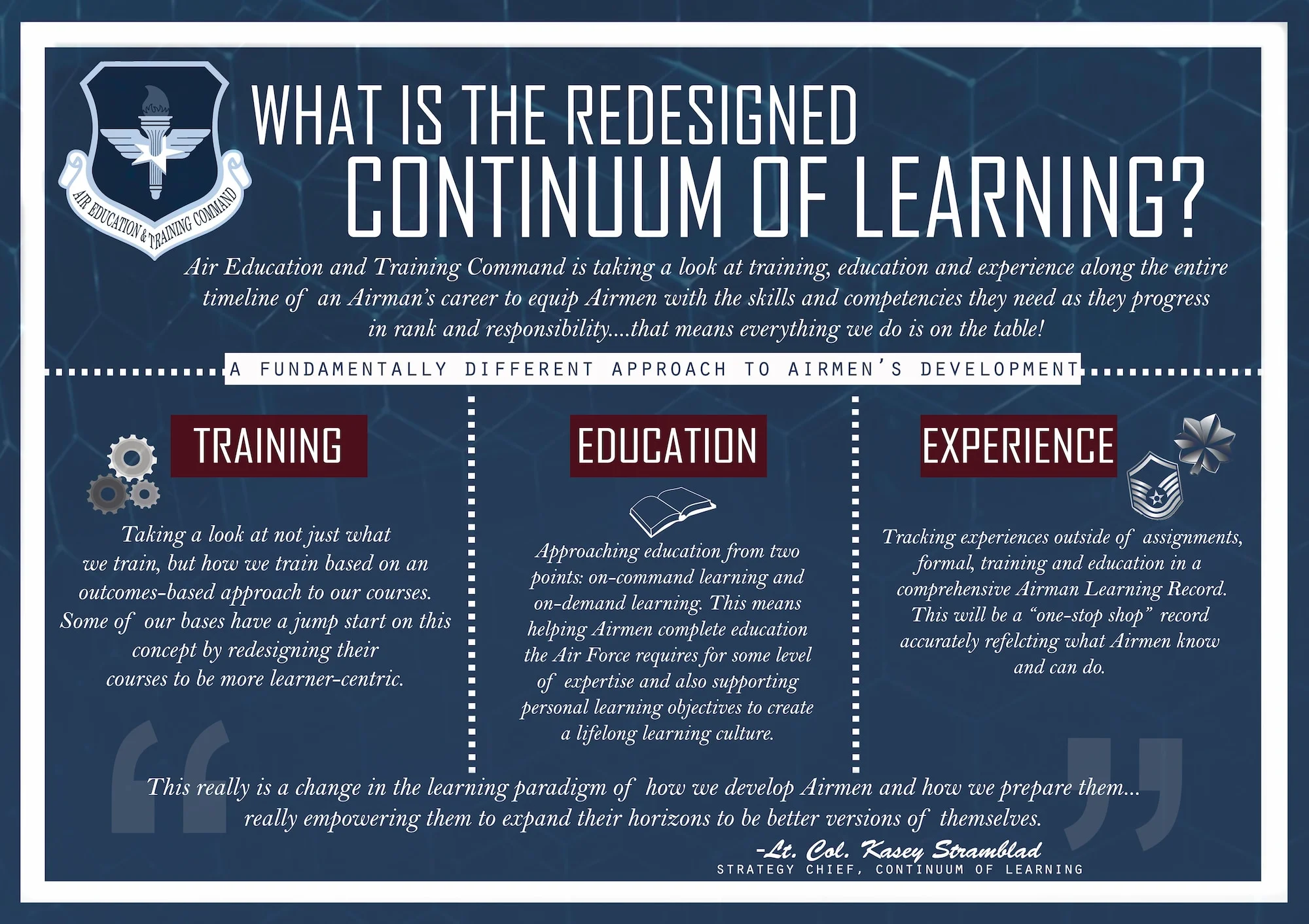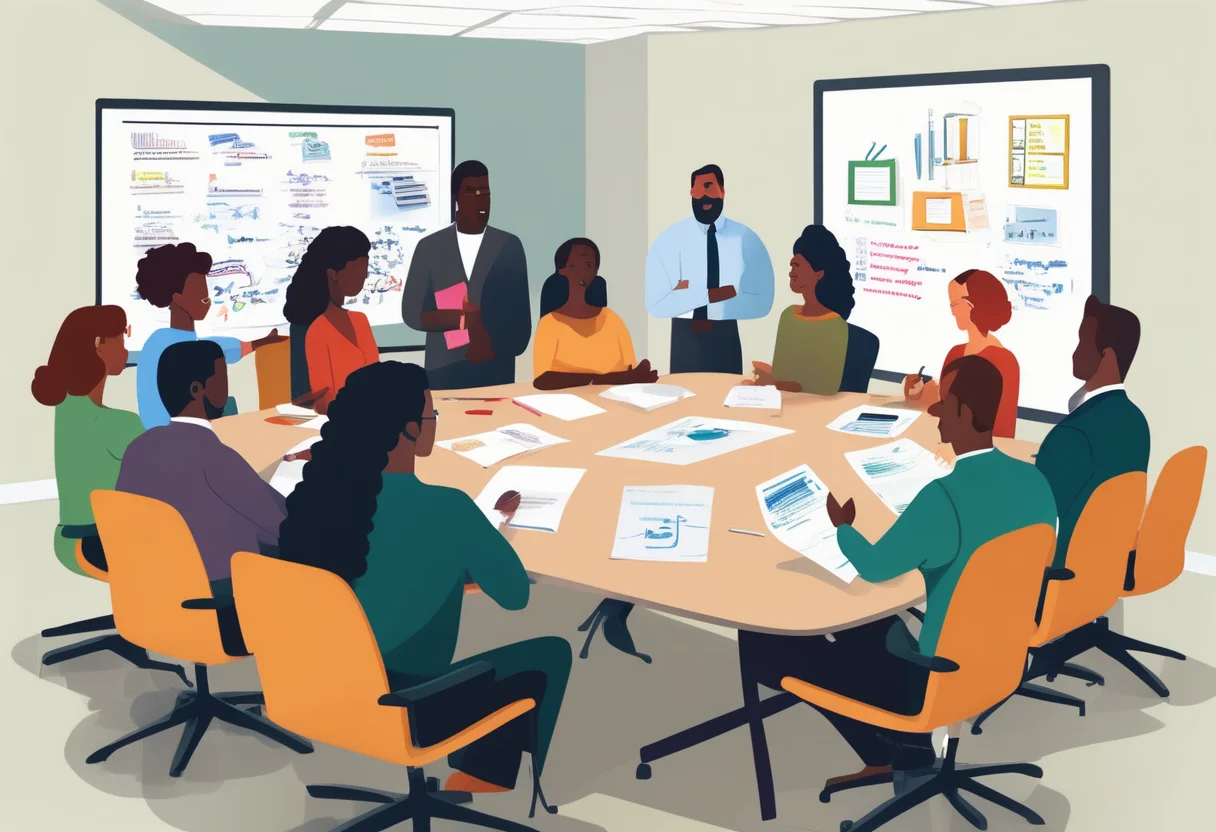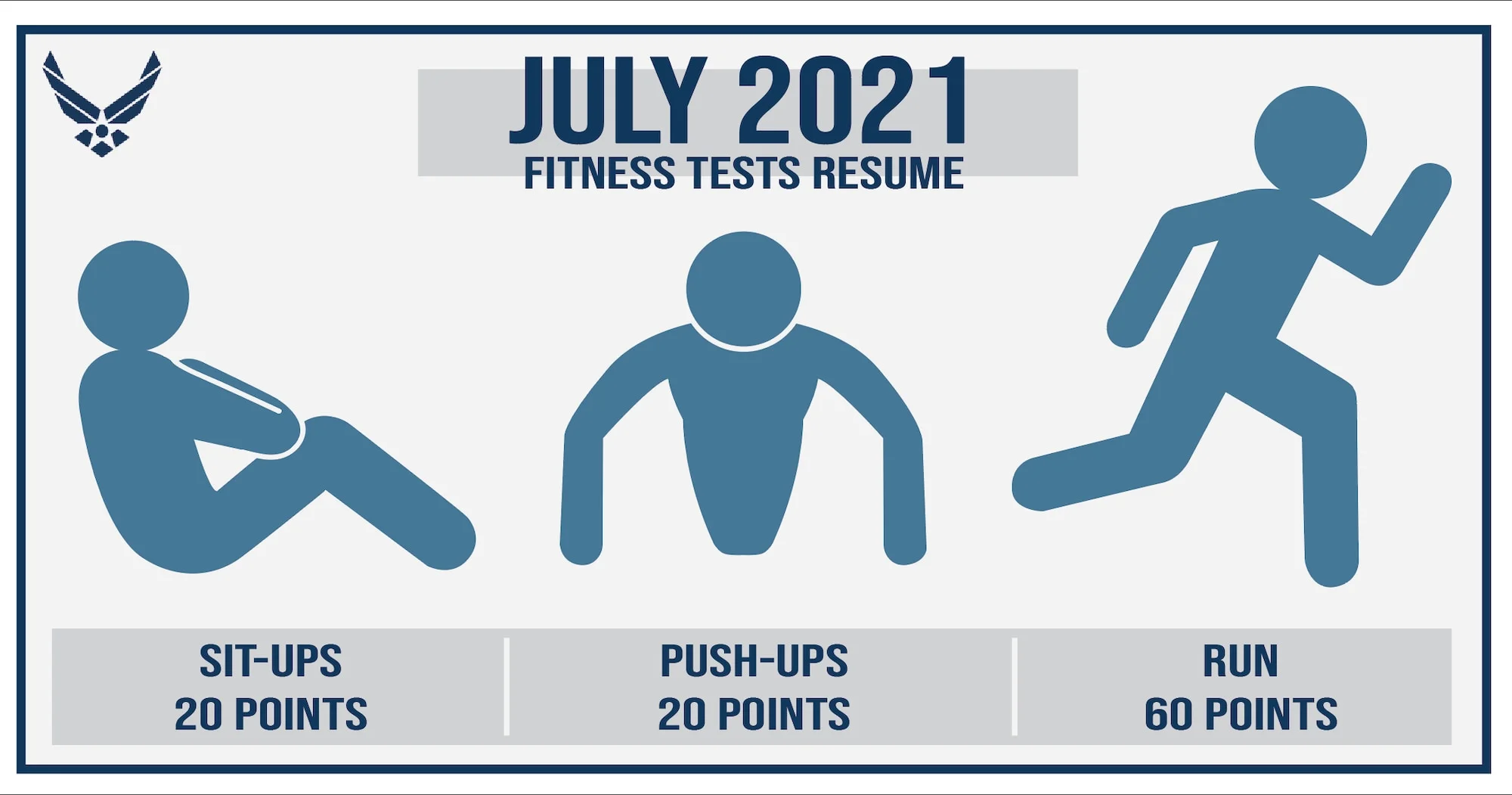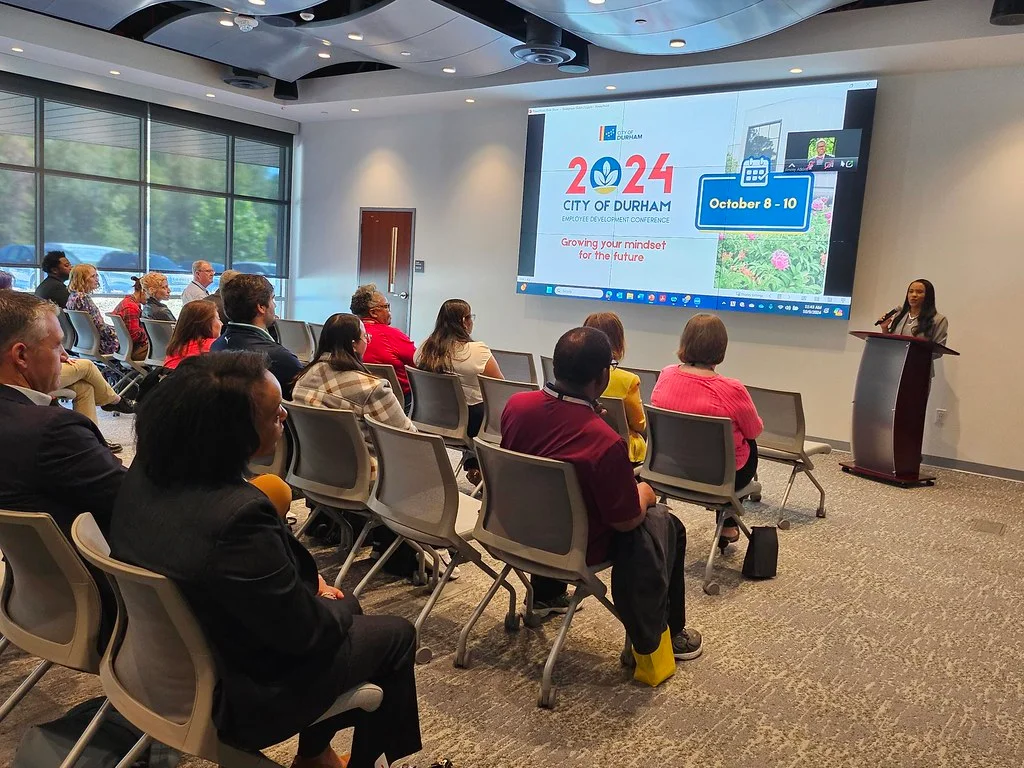
Employee training isn't just another task for HR to check off. It's a smart move for your company's future. Companies with solid training programs see a 24% higher profit margin compared to those that skimp on training. That's a big deal, showing how crucial it is to have a good training plan. But what makes a training program effective? This article breaks down the key parts of a strong training strategy. We'll cover everything from understanding the basics of employee training to setting clear goals and measuring success. Whether you're running a small business or part of a big company, these tips can help you get the most out of your team. Let's explore how to boost productivity and engagement together!
Summary: Este artículo describe el proceso de capacitación de empleados, desde la identificación de necesidades y establecimiento de objetivos hasta el diseño, implementación y evaluación de la efectividad del programa de capacitación. También aborda preguntas frecuentes sobre la capacitación de empleados.
Understanding Employee Training Programs
Defining Employee Training Programs
Employee training is all about giving workers the skills and know-how they need to do their jobs well and get ready for what’s next. It’s a smart move for both employees and companies. It boosts job performance, makes work more satisfying, and opens doors for moving up. Training helps personal growth match up with work goals and makes work smoother, cutting down on mistakes and the need for constant oversight. This ongoing learning helps staff keep up with tech changes and digital shifts, lifting morale and job happiness.
Companies that focus on training get real perks like more innovation, staying competitive, and a better reputation as an employer. For more details, check out Great Place to Work.
Various Types of Employee Training Programs
Effective Onboarding and Orientation
Orientation training helps new employees get a feel for the company culture and what's expected of them. This first step gives them the basics on company rules and procedures, making them feel at home and ready to pitch in.
Technical Skills Training Essentials
This training zeroes in on job-specific skills, like learning new software or equipment. It’s key for keeping things running smoothly and staying ahead in fast-changing tech fields.
Developing Soft Skills for Workplace Success
Soft skills training is about boosting communication, teamwork, and problem-solving. These skills are just as important as technical ones, helping create a team-focused and efficient workplace. Workshops and seminars are common ways to build these skills.

Importance of Compliance Training
Compliance training ensures everyone follows laws, rules, and company policies, which is vital in tightly regulated industries. It covers safety, data protection, and ethical behavior, helping to avoid risks.
Leadership and Management Training Programs
Leadership training gears up employees for bigger roles, making sure there are ready candidates for promotions. These programs often include mentoring and coaching, with a focus on planning and decision-making. Learn more from Indeed and Phenom.
Identifying Employee Training Needs
Conducting Employee Skills Gap Analysis
Conducting a skills gap analysis is essential for identifying where training is needed within your organization. This process involves comparing the current capabilities of your employees with the skills required to perform their jobs effectively and align with company goals.
There are various methods to conduct a skills gap analysis:
- Surveys and Interviews: Gather direct feedback from employees about their skills and training needs.
- Performance Checks: Evaluate employees' current performance to identify areas for improvement.
- Skills Tests: Use assessments to measure specific competencies.
- Advanced Tools: Leverage AI-driven assessments and LMS integrations for precise and quick identification of skill gaps.

To gain a comprehensive understanding, draw from multiple sources such as performance data, employee feedback, and direct observation of employees at work. For example, if reviews and surveys indicate that the customer service team lacks negotiation skills, targeted training can be implemented to enhance sales capabilities.
Different levels of analysis include:
- Organizational Analysis: Evaluates workforce readiness to meet strategic goals.
- Job Analysis: Focuses on the specific requirements of each role.
- Individual Analysis: Identifies the missing skills of specific employees or teams, allowing for customized training solutions.
For more insights, check out these resources:
Aligning Employee Training with Business Goals
Aligning training with business goals ensures that employee development supports the overall success of the company. Training initiatives should be aligned with the company's objectives, especially in response to changes in technology, market dynamics, or operational procedures.
Key steps include:
- Engagement: Involve managers and employees early in the process to ensure relevance and buy-in.
- Planning: Develop training based on identified skill gaps, setting clear objectives, choosing appropriate methods, and efficiently utilizing resources.
- Evaluation: Assess the effectiveness of training programs post-implementation to determine if they enhance performance and contribute to achieving business targets.

Continuous monitoring of learning needs is crucial to ensure training remains relevant as business strategies and roles evolve. For instance, a tech company focusing on digital transformation might identify cloud computing skill gaps and implement targeted upskilling, subsequently measuring if project delivery speeds improve.
Explore further:
Setting Training Objectives
Creating SMART Employee Training Objectives
Getting your training objectives right is key for any employee training program. The SMART framework—Specific, Measurable, Achievable, Relevant, and Time-bound—helps you set these objectives effectively.
-
Specific objectives spell out exactly what the learner will do, using clear action verbs like "create," "demonstrate," and "calculate," instead of vague ones like "understand" or "learn" TalentLMS.
-
Measurable objectives let you track success, like hitting a passing grade or showing a skill with few mistakes Indeed.
-
Achievable objectives take into account what skills and resources are on hand, making sure they're realistic by considering factors like instructor availability TalentLMS.
-
Relevant objectives tie into both employee needs and company goals, zeroing in on outcomes that boost business success and help employees grow Absorb LMS.
-
Time-bound objectives set a clear deadline, like "by the end of the session" or "within six months" Absorb LMS.

It's important to prioritize and test these objectives with stakeholders to ensure they fit with the bigger business picture.
Customizing Employee Training Objectives for Different Roles
Tailoring training objectives to fit different roles and experience levels is crucial.
-
For new hires, objectives might cover mastering company protocols, using equipment, and communicating according to company policies Indeed.
-
For certifications, objectives could involve finishing required training hours, passing exams, and renewing licenses regularly to stay compliant and validate skills Indeed.
-
Performance objectives differ by job, like boosting sales by a certain percentage or handling customer queries within set timeframes BrightHR.
-
Leadership development objectives might focus on mentoring junior staff or designing training programs for future leaders BrightHR.

When setting these objectives, consider factors like workforce type, budget, and prerequisites to ensure they're achievable TalentLMS. Customizing objectives makes training more relevant and effective, boosting employee engagement and growth.
Designing an Employee Training Program
Employee Training Content Design
Starting an employee training program requires a solid plan. Your plan should address:
- Who is being trained
- What the goals are
- When it will happen
- What materials are needed
- Who will conduct the training
- How you will evaluate it
- What comes next after the training
A well-structured plan not only enhances learning but also fosters continuous improvement. Ensure your training goals are SMART: Specific, Measurable, Achievable, Relevant, and Time-bound. This alignment keeps the training focused on company needs and ensures comprehensive learning.

To maintain engagement, use diverse content delivery methods. Incorporate a mix of lectures, hands-on activities, group discussions, and online modules. For example, a customer service program might aim to enhance communication skills and reduce complaints by 15%. This could involve role-specific materials, mentorship for coaching, and a blend of interactive discussions and digital modules.
Leveraging Technology in Employee Training
Integrating technology into your training programs is a strategic move. It provides employees with easy access to resources and accommodates different learning styles. Online modules and digital assessments offer flexible, scalable, and trackable training solutions. Utilize tools like quizzes and performance trackers to evaluate training effectiveness and identify areas for improvement. For example, a technical skills program might employ an online platform for interactive lessons, digital quizzes for assessments, and automated progress tracking to inform subsequent coaching sessions.

Effective Employee Training Delivery Methods
Diversify your training methods to maintain engagement. Combine lectures, hands-on activities, group discussions, and online learning to appeal to various learning preferences. Assigning trainers or mentors can deliver focused support and expert guidance. Implement follow-up actions such as check-ins, refresher sessions, and development planning to reinforce learning and enhance long-term performance. Setting clear, measurable goals aligned with business objectives keeps participants motivated. A leadership program might include workshops, peer discussions, and one-on-one coaching, complemented by regular follow-ups to assess progress and refresh skills.
By employing these strategies, organizations can design a training program that meets employee needs and aligns with business objectives. For more insights on developing training programs, explore Thinkific's blog, AIHR's employee training plan template, and Rippling's guide on employee training programs.
Implementing the Training Plan
Choosing Effective Employee Training Tools
Picking the right tools and platforms is key to making your employee training plan work well. You need tools that fit with how your training is designed and delivered. If your training involves using software, ensure the platform is compatible with your existing systems. Additionally, it should integrate smoothly with your current IT setup and provide robust support to handle any tech hiccups during rollout. This approach helps maintain smooth operations and enhances the learning experience.

You'll also want to determine what resources you need, such as:
- Trainers
- Materials
- Tech tools
- Spaces
Identifying these resources helps you allocate your budget wisely and keep the training running seamlessly. By choosing and integrating the right tools and platforms, you create a learning environment that accommodates the varied needs of your employees.
Enhancing Employee Training Through Collaboration
Working together across different departments is crucial for rolling out a training plan successfully. Involving teams like operations, marketing, and sales tailors the training to their specific needs, ensuring everyone gets on board. It's important to establish clear roles for training coordinators, subject matter experts, managers, learning and development teams, and employees. This clarity keeps everyone accountable throughout the training process.

Utilizing shared documents or project management tools to delegate tasks, set deadlines, and keep everyone informed is also beneficial. These tools simplify coordination and communication, ensuring the training plan proceeds without a hitch. By fostering teamwork and clear communication, you ensure that training boosts individual skills and aligns with your business goals, driving growth.
For further insights, explore these resources:
- Effective Employee Training
- Systems Training Solution Guide
- Creating Effective Training Programs
- Employee Training Plan
Evaluating Training Effectiveness
Measuring Employee Training Success with KPIs
To truly evaluate the effectiveness of employee training programs, organizations must leverage Key Performance Indicators (KPIs). These KPIs are instrumental in tracking progress and verifying if training goals are being achieved.
Key KPIs to consider include:
- Training Completion Rates and Drop-off Rates: These metrics indicate participant engagement levels.
- Pre- and Post-Course Assessment Scores: These scores reveal the knowledge gained and retained.
- Learning Outcomes and Skill Development: Monitoring these helps assess changes in job performance and behavior.
- Employee Engagement Metrics: Metrics like attendance rates and engagement surveys are crucial for understanding employee connection with the training.
Success is often benchmarked by targets such as a 25% increase in test scores and 80% of participants demonstrating new skill competence. Additionally, follow-up tests are critical for assessing knowledge retention, ensuring the training has a lasting impact, and identifying areas needing further support.

Continuous Improvement and Employee Training Feedback
Ongoing evaluation and feedback are essential for maintaining the effectiveness of training programs. The Kirkpatrick Model provides a comprehensive framework to assess training across four levels: reaction, learning, behavior, and results.
In addition to this, Brinkerhoff's Success Case Method qualitatively examines training success, identifying factors that influence outcomes. The Phillips ROI Methodology further connects training to measurable business results, aiding in data-driven decision-making.
Tools for continuous improvement include:
- Learning Management Systems (LMS): Essential for tracking learner progress and engagement, offering insights for ongoing refinement.
- Feedback Tools: Surveys, manager evaluations, and self-assessments help measure the application of learned skills.

FAQs
How to Align Employee Training Plans with Business Goals
Start with a solid training needs assessment. This involves:
- Engaging with employees: Discuss how they perceive their roles within the company's big picture and what training could enhance their job performance.
- Identifying skill gaps: Shape training to align with the company's growth and digital goals.
- Tailoring content: Customize training content based on different roles and existing knowledge to enhance relevance and effectiveness.
For example, survey employees to identify their skills and understand how they perceive their work's impact on company goals. This information allows you to adjust training to fill skill gaps and support the company's strategy. Keep the plan flexible by regularly updating it with feedback from employees and business performance data.
Effective Methods for Measuring Employee Training Success
To evaluate the success of a training program, consider the following methods:
- Pre-training and post-training assessments: Use surveys tailored to the employee's role to determine what they've learned and the training's effectiveness.
- Feedback collection: After training, ask if it helped them gain skills, improved their work, and if they're applying what they learned.
- Trainer evaluation: Collect feedback on the clarity and engagement of the training and the trainer's performance.

Additionally, assess whether employees feel prepared for their roles and if ongoing training maintains their skill levels, as this correlates with job satisfaction and productivity. For instance, a company might survey employees immediately after training and follow up weeks later with performance data and additional surveys to assess long-term impact.
Increasing Employee Engagement with Diverse Training Methods
To enhance engagement, implement a variety of training methods:
- Diverse formats: Include videos, live workshops, reading materials, hands-on practice, micro-learning sessions, and job shadowing to cater to different learning styles.
- Interactive elements: Add games, social opportunities, icebreaker questions, and recognize achievements regularly.
- Comfortable pacing: Use clear visuals and real-life examples, and provide ample practice opportunities for better retention.
Offering on-demand learning resources accommodates different schedules and reinforces learning. A training program might combine short video tutorials with live Q&A sessions, interactive quizzes, and peer learning groups while celebrating milestones to maintain motivation.
By tailoring training to individual learning preferences and fostering a supportive environment, you can boost engagement and motivation. These strategies not only enhance retention but also support the notion that 90% of employees would remain with a company that invests in their learning and development. Retention rates are 34% higher among those with access to professional development, underscoring the importance of diverse and engaging training methods.
